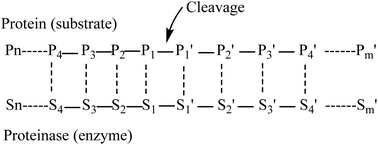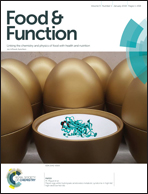Identification and the molecular mechanism of a novel myosin-derived ACE inhibitory peptide
Abstract
The objective of this work was to identify a novel ACE inhibitory peptide from myosin using a number of in silico methods. Myosin was evaluated as a substrate for use in the generation of ACE inhibitory peptides using BIOPEP and ExPASy PeptideCutter. Then the ACE inhibitory activity prediction of peptides in silico was evaluated using the program peptide ranker, following the database search of known and unknown peptides using the program BIOPEP. In addition, the interaction mechanisms of the peptide and ACE were evaluated by DS. All of the tripeptides were predicted to be nontoxic. Results suggested that the tripeptide NCW exerted potent ACE inhibitory activity with an IC50 value of 35.5 μM. Furthermore, the results suggested that the peptide NCW comes into contact with Zn 701, Tyr 523, His 383, Glu 384, Glu 411, and His 387. The potential molecular mechanism of the NCW/ACE interaction was investigated. Results confirmed that the higher inhibitory potency of NCW might be attributed to the formation of more hydrogen bonds with the ACE's active site. Therefore, the in silico method is effective to predict and identify novel ACE inhibitory peptides from protein hydrolysates.



 Please wait while we load your content...
Please wait while we load your content...